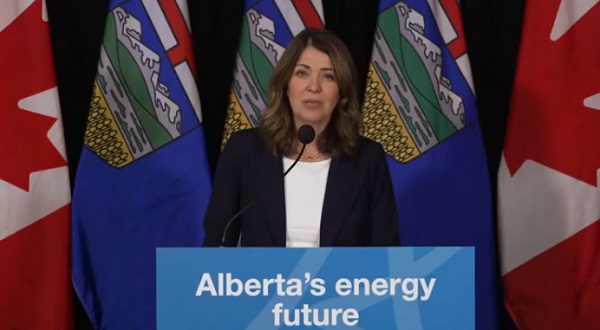Business
Costly construction isn’t the culprit behind unaffordable housing

From the Frontier Centre for Public Policy
By Wendell Cox
Land restriction creates what amount to land cartels. A now smaller number of landowners gain windfall profits, which, of course, encourages speculation
The latest Demographia report on housing affordability in Canada, which I produce for the Frontier Centre for Public Policy, reveals that over half of the 46 Canadian housing markets we assess are severely unaffordable. In fact, Vancouver and Toronto rank as third and 10th least affordable, respectively, among the 94 major global markets included in our latest international housing affordability study.
To evaluate housing costs, we utilize the “median multiple,” which divides the median house price within a given market (census metropolitan area) by its median household income. A multiple equal to or less than 3.0 is categorized as “affordable,” while anything exceeding 5.0 is labelled “severely unaffordable.”
Among the major Canadian housing markets, Vancouver (with a median multiple of 12), Toronto (9.5), Montreal (5.4), and Ottawa-Gatineau (5.2) fall into the severely unaffordable category. Vancouver has maintained a high median multiple for several decades, while Toronto has been in this range for approximately two decades. The increased prevalence of telecommuting has recently contributed to Montreal and Ottawa-Gatineau’s affordability challenges, leading to a surge in demand for larger homes and properties in more distant suburbs. In contrast, housing in Edmonton (4.0) and Calgary (4.3) remains comparatively affordable.
In Toronto and Vancouver, the implementation of international urban planning principles, particularly those promoting anti-sprawl measures like greenbelts and agricultural preserves, has led to unprecedented price hikes. This “urban containment” approach has consistently driven up land values where it has been adopted. And high land values rather than increased construction costs are what explain the substantial disparity between severely unaffordable and more budget-friendly markets.
Land restriction creates what amount to land cartels. A now smaller number of landowners gain windfall profits, which, of course, encourages speculation. Maintaining or restoring affordability requires eliminating windfall profits by ensuring a competitive market for land.
Another issue arises from urban planners’ preference for higher-density housing, such as high-rise condos. Some households may prefer high-rise living, but families with children typically seek housing with more land, whether detached or semi-detached. When they’re priced out of good housing markets, their quality of life suffers and they may even fall into poverty.
The troubling paradox is that unaffordable housing is far more common in markets like Vancouver and Toronto, which have embraced the planning orthodoxy — which is supposed to produce affordable housing. The same applies to international markets like Sydney, Auckland, London and San Francisco, where urban containment and unaffordable housing have gone hand in hand.
What’s the solution? Give up on urban containment and make more land available for housing. But wouldn’t that threaten the natural environment, as critics of Ontario’s recent attempt to allow development of a sliver of its greenbelt argued?
Not at all. It’s true that land under cultivation in Canada has been declining steadily over the years. But the culprit is improved agricultural productivity, not urban expansion. According to Statistics Canada, between 2001 and 2021, agricultural land shrank 53,000 square kilometres. That’s about equal to the land area of Nova Scotia. And it’s about triple all the area urbanized since European settlement began. Even in Ontario and B.C. where most of the severely unaffordable markets are concentrated, urban expansion from 2016 to 2021 took up less than one-quarter of the agricultural loss over that period. Urban expansion is not squeezing out agricultural land.
Given all this, what should we do about affordability? In my view, three things:
First, it’s essential to acknowledge that Canadians are already addressing the issue by relocating from pricier to more affordable regions. Housing is more affordable in the Atlantic and Prairie provinces and areas in Quebec east of Montreal. So it’s not surprising there is now a net influx of people to smaller, typically more affordable, locations. In the past five years, markets with populations exceeding 100,000 have collectively witnessed over 250,000 people moving to smaller markets.
Second, make more land available for development in increasingly unaffordable markets like B.C., southern Ontario, and the Montreal-Ottawa corridor. One way is with “housing opportunity enclaves” (HOEs), in which traditional, i.e., not high-density, housing regulations would apply, but essential environmental and safety regulations would. The aim would be to provide middle-income housing at the price-to-income ratios that were typical before urban containment came along and housing across the country was largely affordable.
Market-driven development would be ensured by relying on the private sector to provide housing, land, and infrastructure, a model that has been successful in Colorado and Texas. Current residents would maintain their property rights but could sell to private parties and First Nations for development.
HOEs would be situated far enough outside major centres to take advantage of low-priced land, prioritizing areas with the largest recent agricultural land reductions. Communities likely would resemble Waverly West in Winnipeg or The Woodlands in Houston, with ample housing space and yards for families with children.
These new communities would attract people working at least partly from home. Jobs would naturally follow, creating self-contained communities where most commutes occurred within the HOE. To ensure a competitive market and prevent land cost escalation, HOEs must have ample land available.
Third, public authorities should allocate an ample amount of suburban land to safeguard reasonable land values in the Prairie and Atlantic provinces, as well as in Quebec east of Montreal. This would allow currently more affordable markets such as Quebec City, Calgary, Edmonton, Winnipeg, Moncton and Halifax to accommodate interprovincial migrants without jeopardizing their affordability.
Provincial and local governments would need to monitor housing affordability multiples on at least a five-year cycle, and legislatures, land use authorities and city councils would have to allow enough low-cost land development to maintain price-to-income stability.
It’s not enough just to provide enough building lots to meet projected demand. The goal should be to enable builders to provide housing at prices middle-income households can afford. The key to that is affordable land.
Wendell Cox is a Senior Fellow at the Frontier Centre for Public Policy. He is the author of 2023 Edition Of Demographia Housing Affordability In Canada and has been featured on Leaders on the Frontier – Cost of Living Under Crisis With Charles Blain.
Business
Is Carney Falling Into The Same Fiscal Traps As Trudeau?

From the Frontier Centre for Public Policy
By Jay Goldberg
Rosy projections, chronic deficits, and opaque budgeting. If nothing changes, Carney’s credibility could collapse under the same weight.
Carney promised a fresh start. His budget makes it look like we’re still stuck with the same old Trudeau playbook
It turns out the Trudeau government really did look at Canada’s economy through rose-coloured glasses. Is the Carney government falling into the same pattern?
New research from the Frontier Centre for Public Policy shows that federal budgets during the Trudeau years “consistently overestimated [Canada’s] fiscal health” when it came to forecasting the state of the nation’s economy and finances over the long term.
In his research, policy analyst Conrad Eder finds that, when looking specifically at projections of where the economy would be four years out, Trudeau-era budgets tended to have forecast errors of four per cent of nominal GDP, or an average of $94.4 billion.
Because budgets were so much more optimistic about long-term growth, they consistently projected that government revenue would grow at a much faster pace. The Trudeau government then made spending commitments, assuming the money would be there. And when the forecasts did not keep up, deficits simply grew.
As Eder writes, “these dramatic discrepancies illustrate how the Trudeau government’s longer-term projections consistently underestimated the persistence of fiscal challenges and overestimated its ability to improve the budgetary balance.”
Eder concludes that politics came into play and influenced how the Trudeau government framed its forecasts. Rather than focusing on the long-term health of Canada’s finances, the Trudeau government was focused on politics. But presenting overly optimistic forecasts has long-term consequences.
“When official projections consistently deviate from actual outcomes, they obscure the scope of deficits, inhibit effective fiscal planning, and mislead policymakers and the public,” Eder writes.
“This disconnect between projected and actual fiscal outcomes undermines the reliability of long-term planning tools and erodes public confidence in the government’s fiscal management.”
The public’s confidence in the Trudeau government’s fiscal management was so low, in fact, that by the end of 2024 the Liberals were polling in the high teens, behind the NDP.
The key to the Liberal Party’s electoral survival became twofold: the “elbows up” rhetoric in response to the Trump administration’s tariffs, and the choice of a new leader who seemed to have significant credibility and was disconnected from the fiscal blunders of the Trudeau years.
Mark Carney was recruited to run for the Liberal leadership as the antidote to Trudeau. His résumé as governor of the Bank of Canada during the Great Recession and his subsequent years leading the Bank of England seemed to offer Canadians the opposite of the fiscal inexperience of the Trudeau years.
These two factors together helped turn around the Liberals’ fortunes and secured the party a fourth straight mandate in April’s elections.
But now Carney has presented a budget of his own, and it too spills a lot of red ink.
This year’s deficit is projected to be a stunning $78.3 billion, and the federal deficit is expected to stay over $50 billion for at least the next four years.
The fiscal picture presented by Finance Minister François-Philippe Champagne was a bleak one.
What remains to be seen is whether the chronic politicking over long-term forecasts that plagued the Trudeau government will continue to be a feature of the Carney regime.
As bad as the deficit figures look now, one has to wonder, given Eder’s research, whether the state of Canada’s finances is even worse than Champagne’s budget lets on.
As Eder says, years of rose-coloured budgeting undermined public trust and misled both policymakers and voters. The question now is whether this approach to the federal budget continues under Carney at the helm.
Budget 2025 significantly revises the economic growth projections found in the 2024 fall economic statement for both 2025 and 2026. However, the forecasts for 2027, 2028 and 2029 were left largely unchanged.
If Eder is right, and the Liberals are overly optimistic when it comes to four-year forecasts, then the 2025 budget should worry Canadians. Why? Because the Carney government did not change the Trudeau government’s 2029 economic projections by even a fraction of a per cent.
In other words, despite the gloomy fiscal numbers found in Budget 2025, the Carney government may still be wearing the same rose-coloured budgeting glasses as the Trudeau government did, at least when it comes to long-range fiscal planning.
If the Carney government wants to have more credibility than the Trudeau government over the long term, it needs to be more transparent about how long-term economic projections are made and be clear about whether the Finance Department’s approach to forecasting has changed with the government. Otherwise, Carney’s fiscal credibility, despite his résumé, may meet the same fate as Trudeau’s.
Jay Goldberg is a fellow with the Frontier Centre for Public Policy.
Business
Carney government should privatize airports—then open airline industry to competition

From the Fraser Institute
By Alex Whalen and Jake Fuss
This holiday season, many Canadians will fly to spend time to with family and friends. But air travellers in Canada consistently report frustration with service, cost and choice. In its recent budget, the Carney government announced it will consider “options for the privatization of airports.” What does this mean for Canadians?
Up until the 1990s, the federal government served as both the owner and operator of Canada’s major airports. The Chrétien government partially privatized and transferred the operation of major airports to not-for-profit airport authorities, while the federal government remained the owner of the land. Since then, the federal government has effectively been the landlord for Canada’s airports, collecting rent each year from the not-for-profit operating authorities.
What would full privatization of airports look like?
If the government allows private for-profit businesses to own Canada’s major airports, their incentives would be to operate as efficiently as possible, serve customers and generate profits. Currently, there’s little incentive to compete as the operating authorities are largely unaccountable because they only report to government officials in a limited form, rather than reporting directly to shareholders as they would under privatization. Private for-profit airports exist in many other countries, and research has shown they are often less costly for passengers and more innovative.
Yet, privatization of airports should be only the first step in a broader package of reforms to improve air travel in Canada. The federal government should also open up competition by creating the conditions for new airports, new airlines and new investment. Currently, Canada restricts foreign ownership of Canadian airlines, while also restricting foreign airlines from flying within Canada. Consequently, Canadians are left with little choice when booking air travel. Opening up the industry by reversing these policies would force incumbent airlines to compete with a greater number of airlines, generating greater choice and likely lower costs for consumers.
Moreover, the federal government should reduce the taxes and fees on air travel that contribute to the cost of airline tickets. Indeed, according to our recent research, among peer countries, Canada has among the most expensive air travel taxes and fees. These costs get passed on to consumers, so it’s no surprise that Canada consistently ranks as a very expensive country for air travel.
If the Carney government actually privatizes Canada’s airports, this would be a good first step to introducing greater competition in an industry where it’s badly needed. But to truly deliver for Canadians, the government must go much further and overhaul the numerous policies, taxes and fees that limit competition and drive up costs.
-

 armed forces2 days ago
armed forces2 days agoGlobal Military Industrial Complex Has Never Had It So Good, New Report Finds
-

 Alberta2 days ago
Alberta2 days agoEmissions Reduction Alberta offering financial boost for the next transformative drilling idea
-

 Business1 day ago
Business1 day agoRecent price declines don’t solve Toronto’s housing affordability crisis
-

 C2C Journal2 days ago
C2C Journal2 days agoLearning the Truth about “Children’s Graves” and Residential Schools is More Important than Ever
-

 Business2 days ago
Business2 days agoWhy Isn’t There a Cure for Alzheimer’s Disease?
-

 Brownstone Institute2 days ago
Brownstone Institute2 days agoThe Unmasking of Vaccine Science
-

 Censorship Industrial Complex20 hours ago
Censorship Industrial Complex20 hours agoA Democracy That Can’t Take A Joke Won’t Tolerate Dissent
-

 Artificial Intelligence1 day ago
Artificial Intelligence1 day agoThe Emptiness Inside: Why Large Language Models Can’t Think – and Never Will











